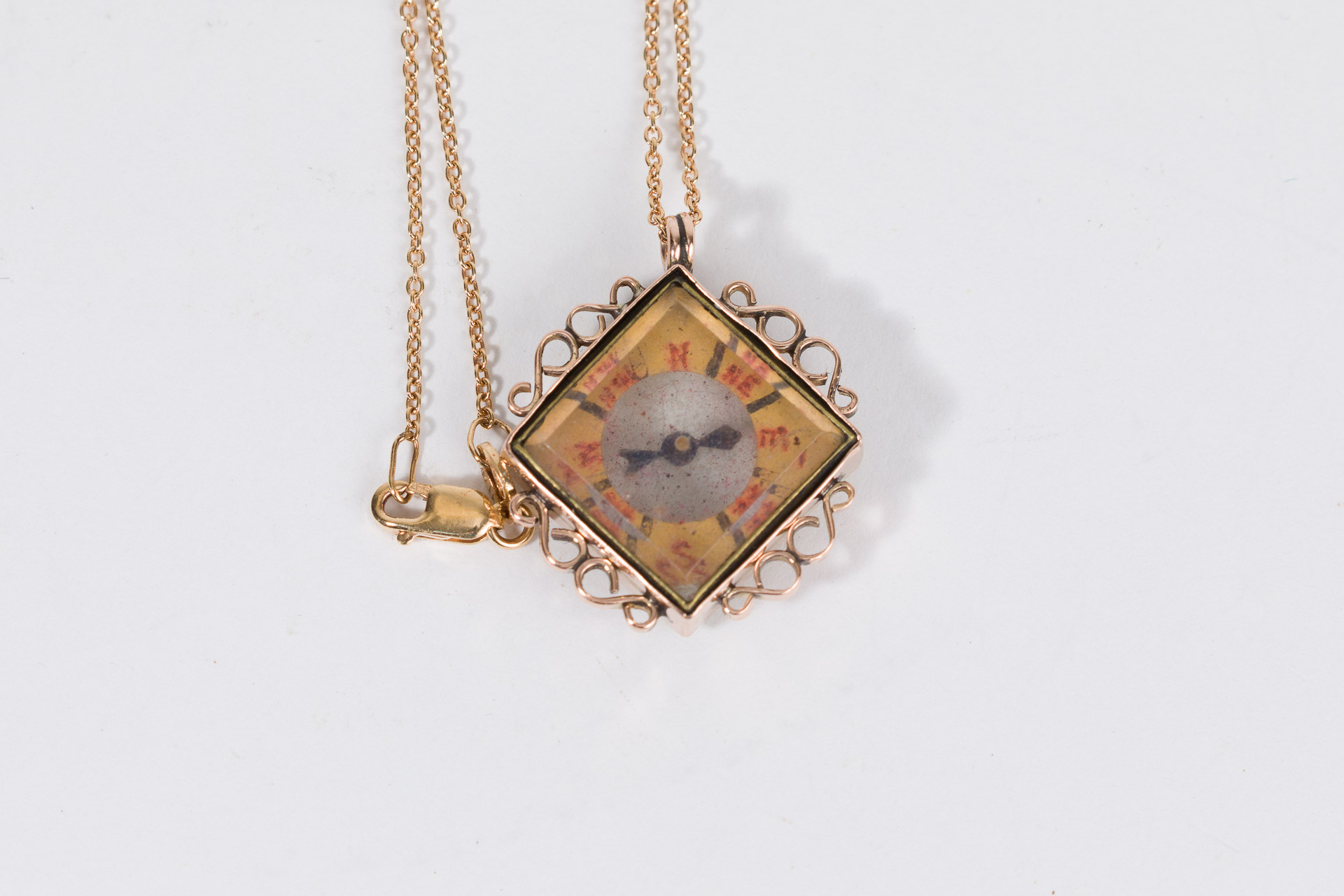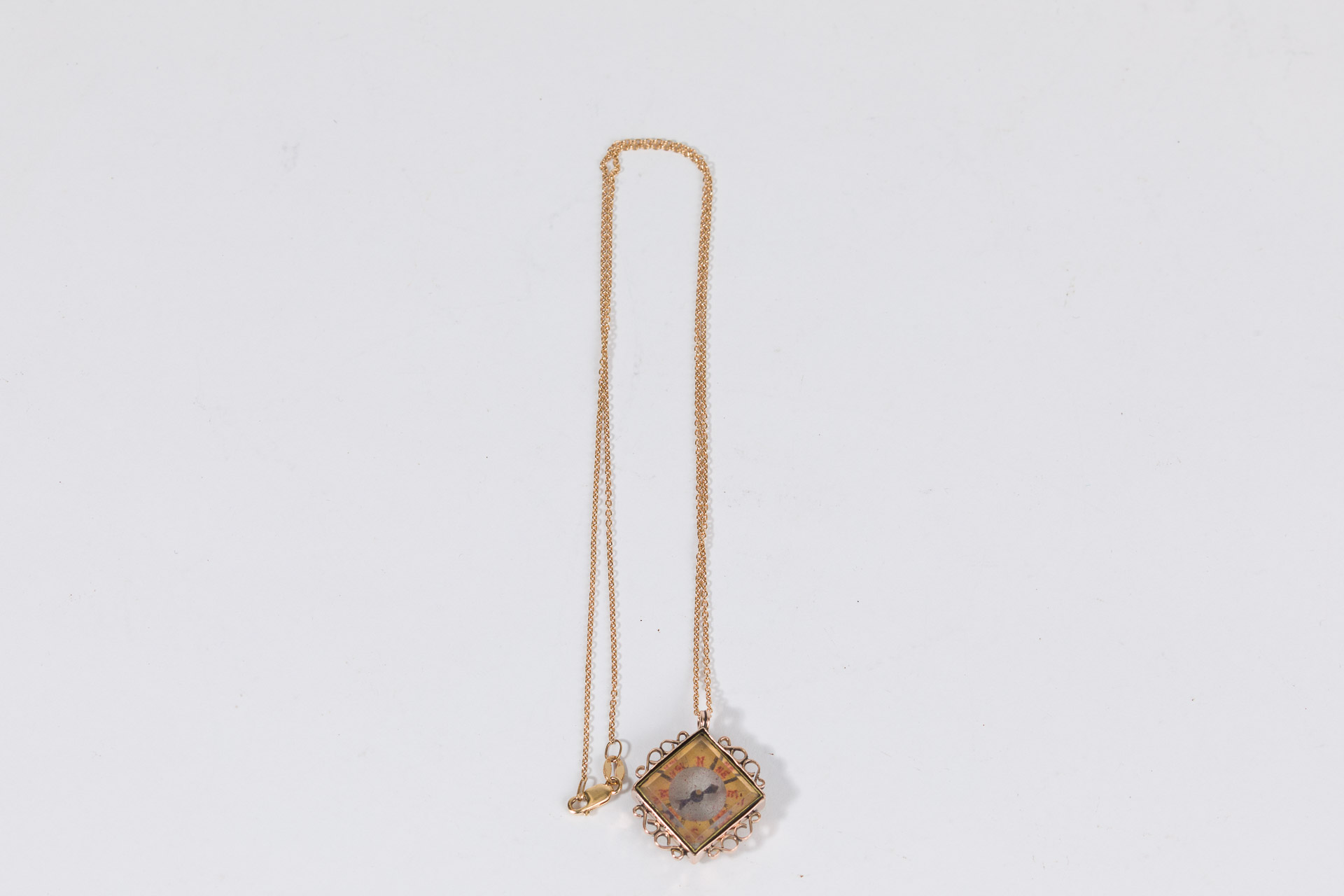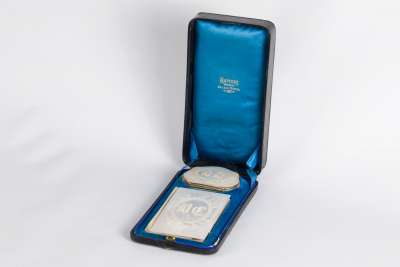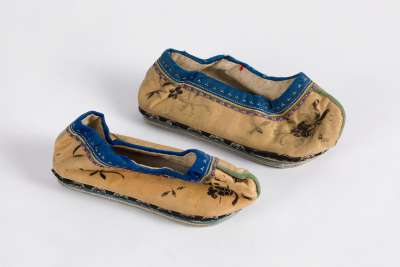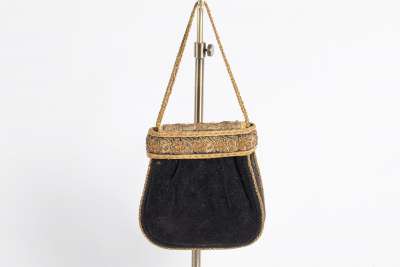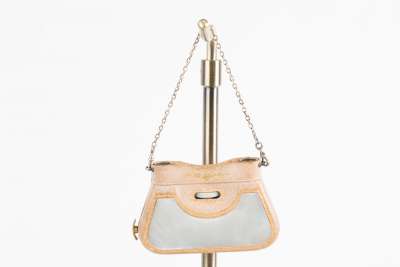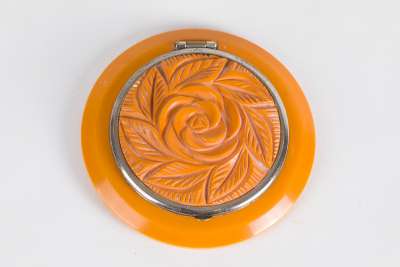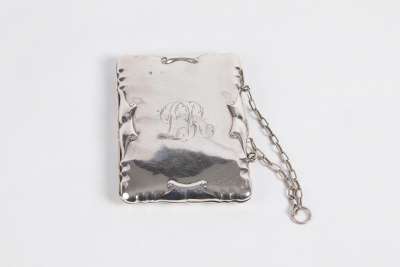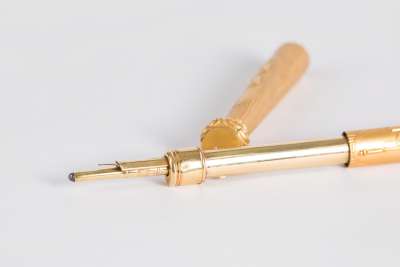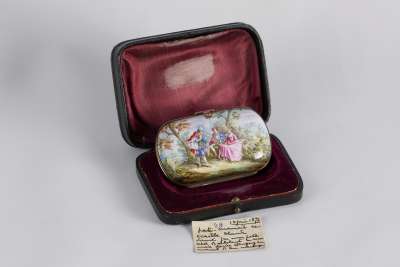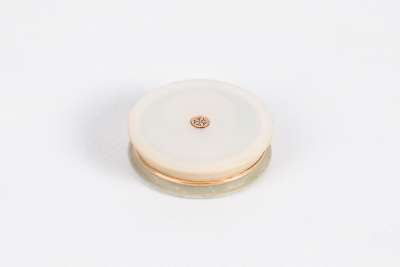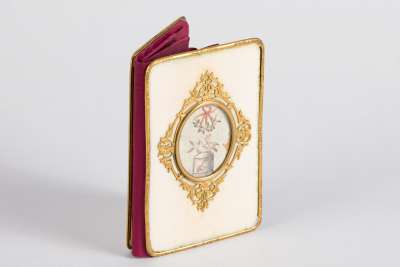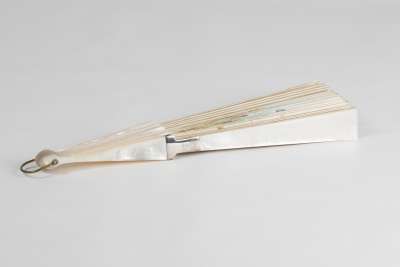This petite compass, crafted in the early 19th century, is a fine example of Georgian craftsmanship. Originating from England, this compass is elegantly designed as a pendant, showcasing a remarkable blend of functionality and decorative art. Constructed from 9ct gold, it features a double-sided design with one side displaying enamelled compass points, while the reverse side presents hand-painted compass points. The compass is compact, making it a delicate yet practical accessory from its era.
Condition Report
The petite compass is in good condition, with signs of wear consistent with its age and usage. There are minor surface scratches that do not detract from its functionality or aesthetic value. The enamelled and hand-painted compass points remain discernible, though some fading is noticeable, which is typical for items of this vintage. The gold casing exhibits a warm patina, adding to its historic charm. The glass covering the compass remains intact, ensuring the piece's utility is not compromised. Overall, this item has been well-preserved, offering both historical value and decorative appeal.
Dimensions
Weight: 5gm, Length: 2.2cm, Width: 2.25cm, Height: 0.5cm.
A Portable Guide for Navigation
This compass was originally intended as a navigational aid, designed to be worn as a pendant for easy access during travel. Its compact size made it an ideal companion for travellers and explorers in the early 19th century, providing them with a reliable means to determine direction. The dual-sided design suggests it was both a practical tool and a decorative item, reflecting the Georgian era's appreciation for utility combined with ornamental elegance.
Exemplary Georgian Design
The compass is a quintessential representation of Georgian design, characterised by its blend of functionality and aesthetics. Georgian jewellery often featured intricate designs and the use of high-quality materials, as seen in this compass's 9ct gold construction and enamel details. The period is known for its emphasis on symmetry and classical motifs, which are subtly echoed in the compass's balanced design. This piece reflects the era's technological advancements and the societal trend of incorporating scientific instruments into everyday fashion.
The Craft of Goldsmithing and Enamelling
The creation of this compass involved skilled goldsmithing and enamelling techniques typical of the period. The 9ct gold casing would have been meticulously crafted by hand, requiring precision to ensure the compass mechanism functioned correctly. The enamelled compass points demonstrate the artisan's expertise in applying this delicate material, which involves a complex process of firing powdered glass to achieve a smooth, durable surface. The hand-painted side reveals the craftsman's steady hand and attention to detail, showcasing the dual skills of a jeweller and painter.
Created by an English Artisan
While the specific maker of this compass remains unidentified, it is indicative of the high standard of craftsmanship found in English artisans of the early 19th century. During this period, England was renowned for its skilled goldsmiths who produced both practical and ornamental items. This compass likely originated from a workshop that specialised in fine jewellery and scientific instruments, reflecting the maker's ability to blend art with utility. Such items were often commissioned by affluent individuals who valued both style and practicality.
Collected by Enthusiasts of Nautical Instruments
Antiques like this petite compass hold particular appeal for collectors interested in nautical instruments and early scientific tools. Collectors are drawn to these items not only for their historical significance but also for their craftsmanship and the insight they provide into past technological practices. The compass's compact design and dual functionality as both a tool and jewellery piece make it a unique addition to any collection. Enthusiasts appreciate the piece's ability to convey the spirit of exploration and the elegance of Georgian design, making it a sought-after item for those dedicated to preserving history through collecting.

